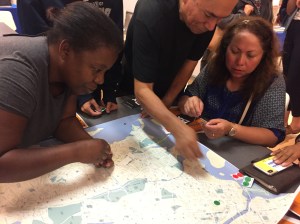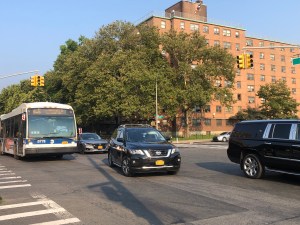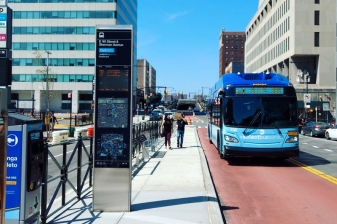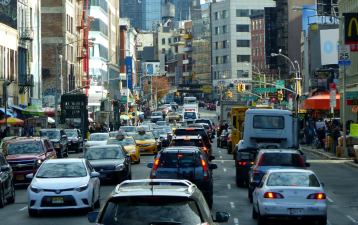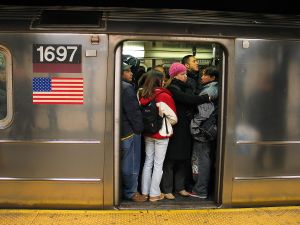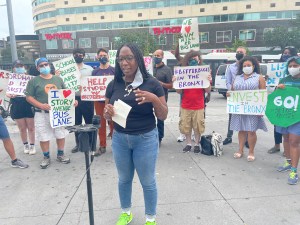Rafael Salamanca and Bronx Pols Pressure DOT to Scrap Bus Lanes for Bx6
The bus route serves 24,000 daily trips in an area where 76 percent of households don't own cars, but Salamanca, Marcos Crespo, Ruben Diaz Sr., and Jeff Klein are only concerned about car traffic.
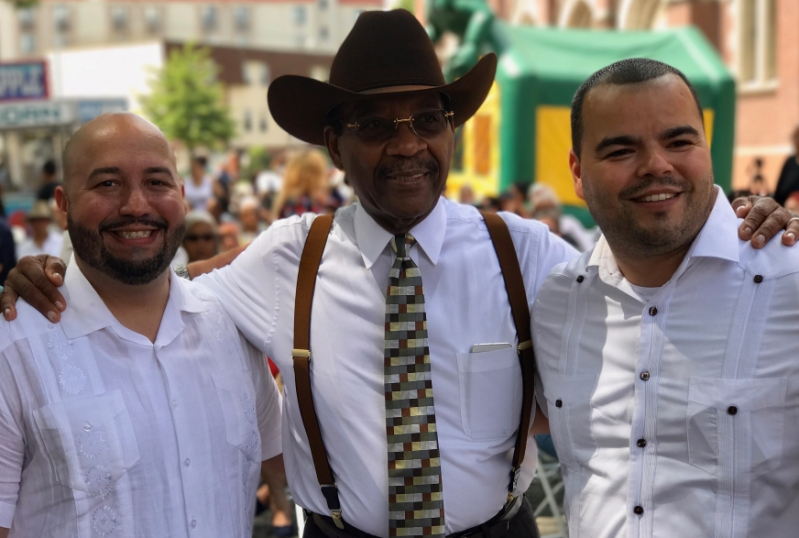
Sometimes elected officials say they want better bus service, but when they have to actually stick up for riders, they wilt.
Last July, newly-elected Bronx Council Member Rafael Salamanca signed onto the Bus Turnaround Coalition’s call for citywide bus improvements. Chief among the recommendations is the expansion of bus lanes throughout the city.
“Residents deserve safe, fast and reliable bus service, notably in areas that are not serviced by the subway system such as the Lafayette-Boynton area of Soundview in my district,” Salamanca said in a statement at the time [PDF].
A year later, the city is delivering what Salamanca asked for with Bx6 Select Bus Service, which DOT has started to implement on 161st Street and 163rd Street. The project includes an eastbound bus lane on 163rd Street between Tiffany Street and Southern Boulevard [PDF], providing faster service for bus riders in the exact neighborhoods Salamanca mentioned, which are just across the Bronx River.
You’d think Salamanca would be cheering the service improvements for his constituents, a large majority of whom are car-free and commute by transit. Think again.
In a letter to DOT Commissioner Polly Trottenberg, Salamanca, Assembly Member Marcos Crespo, CB 2 Chair Robert Crespo, and state senators Ruben Diaz Sr. and Jeff Klein write: “In travelling through this area, we have observed the backups caused by both the bus service and automobile traffic.” They have concluded that “it is blatantly evident that the loss of a lane here will not rectify the problem” [PDF].
It’s clear that whatever problems they observed while traveling through the area came while in a car, not a bus. Hence the goal — get rid of the dedicated transit lane that lets 50 people in a bus bypass a few people in private cars.
With 24,000 daily trips but an average speed of just 6.2 miles per hour, the Bx6 exemplifies the problems with New York City bus service, which is the slowest in the nation. While the Bx6 serves an essential role getting people across the Bronx — something no subway route does — the buses get bogged down in traffic with single-occupancy vehicles.
But that’s not the “problem” that concerns these elected officials. Traffic gets five mentions in their letter, while bus service is only mentioned once — and only as a cause of said traffic.

Within a quarter-mile of the Bx6 route, 76 percent of households do not own cars, according to DOT. Just 15 percent drive to work. In 2011, 64.2 percent of households in Crespo’s Assembly District were car-free.
Bus lanes won’t make car traffic flow freely — only road pricing can do that — but they can give the car-free majority access to faster, more reliable travel, and allow more people to make use of the same amount of street space.
If motorists on 163rd Street are frustrated with traffic, they can switch to the buses traveling on dedicated lanes. But without bus lanes, the 24,000 passengers who ride the Bx6 every day will still be stuck in traffic — with no alternative.
